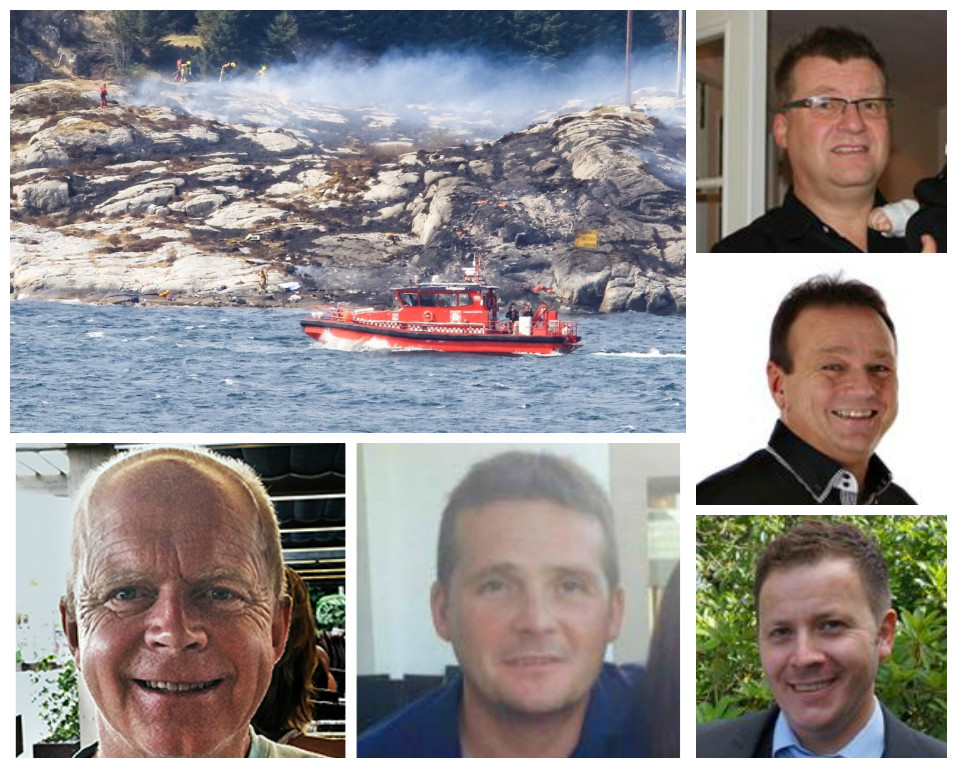
Investigators said a North Sea helicopter flight which crashed killing 13 people dropped 2000ft from the sky when its main rotor head and mast suddenly detached.
A preliminary report yesterday from the Air Investigation Branch Norway (AIBN) has found there was a “sudden catastrophic failure” which developed in only one to two seconds before the flight impacted on a small island and caught fire.
There were 11 passengers and two crew on board the CHC Super Puma EC225 flight from Statoil’s Gullfaks B platform to Flesland Airport when the incident happened on April 29th.
Following the initial impact of the crash, the helicopter is said to have ended up in the sea where it came to rest at a depth of one to nine metres.
The report added the accident was “not survivable”.
RMT regional organiser Jake Molloy said last night offshore workers were still waiting for “absolute proof” of what had caused the crash before the helicopter model could resume operational flights.
Investigators have warned it could take up to a year before a final report is published.
Since the crash two weeks ago investigators have been working tirelessly to collect all the wreckage from the scene of the incident.
The early assessment of what took place was revealed on the same day the funeral of Iain Stuart, 41, from Laurencekirk took place.
The father-of-two who worked for Halliburton was killed alongside an Italian national and 11 Norwegians.
The report said combined cockpit voice and flight data recorder, which was salvaged from the tail section of the helicopter the day of the accident, showed “everything appeared to be normal” up until the crash.
It was also found there were “no indications” any actions by the flight crew had been a factor in the incident.
The report said: “HKS241 was enroute from Gullfaks B (ENQG) to Bergen Airport Flesland (ENBR).
“The helicopter was cruising at 2000ft when the Main Rotor Head (MRH) and mast suddenly detached.
“The helicopter impacted on a small island and caught fire. The main wreckage thereafter ended in the sea where it came to rest at a depth of 1-9 meters.
“The accident was not survivable. The CVFDR (Combined Cockpit Voice and Flight Data Recorder) was salvaged from the tail section of the helicopter the day of the accident.
“The recorder was taken to the Air Accidents Investigation Branch (AAIB) at Farnborough, UK for read-out.
“Two days after the accident, a complete data set of both voice and flight data was successfully downloaded.
“The recordings on the CVFDR showed that everything appeared to be normal until a sudden catastrophic failure developed in 1-2 seconds.
“The CVFDR recordings ended abruptly at the same time. There are no indications that flight crew actions were a factor in the accident.”
Several key components from the crash are still missing and the report said “significant sea and land search” was still ongoing in order to retrieve the components.
All retrieved parts from the wreckage have been removed from a naval base where they were initially taken to the AIBN’s premises in Lillestrom for further assessment.
Investigators said they were currently focusing on a number of parts including the main gearbox and the main rotor head.
The investigation, which is being led by the AIBN, Is being supported by the Le Bureau d’Enquêtes et d’Analyses (BEA) pour la Sécurité de l’Aviation civile as well as technical advisors from Airbus Helicopters and engine manufacturer Turbomeca.
Earlier this week aviation authorities in the UK and Norway decided to extend a flying ban to other Airbus helicopters following last month’s crash.
RMT regional organiser Jake Molloy said following the publishing of the report that there would need to be “absolute proof” of what had taken place before the helicopter model could be used once again in operational flights.
He said: “It’s absolutely vital for the workers and their families across the European Continental Shelf and beyond that we have absolute proof of what caused this crash.
“I can only with the investigators and the forensic team trying to piece this together the best of luck. It’s crucial they get it right and get to the root of what caused this.
“This is a waiting game.”
Recommended for you
